한국응용과학기술학회 논문 검색
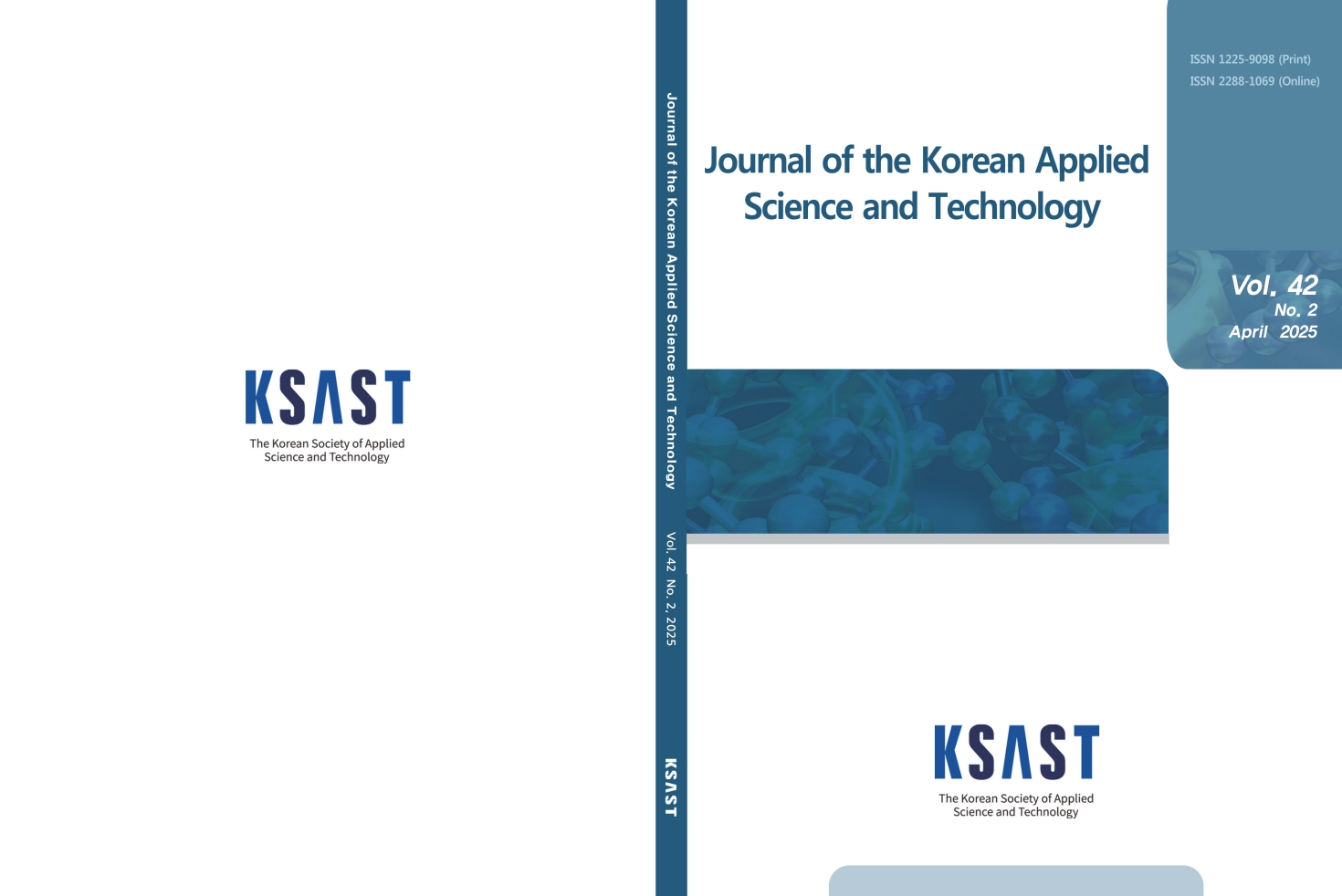
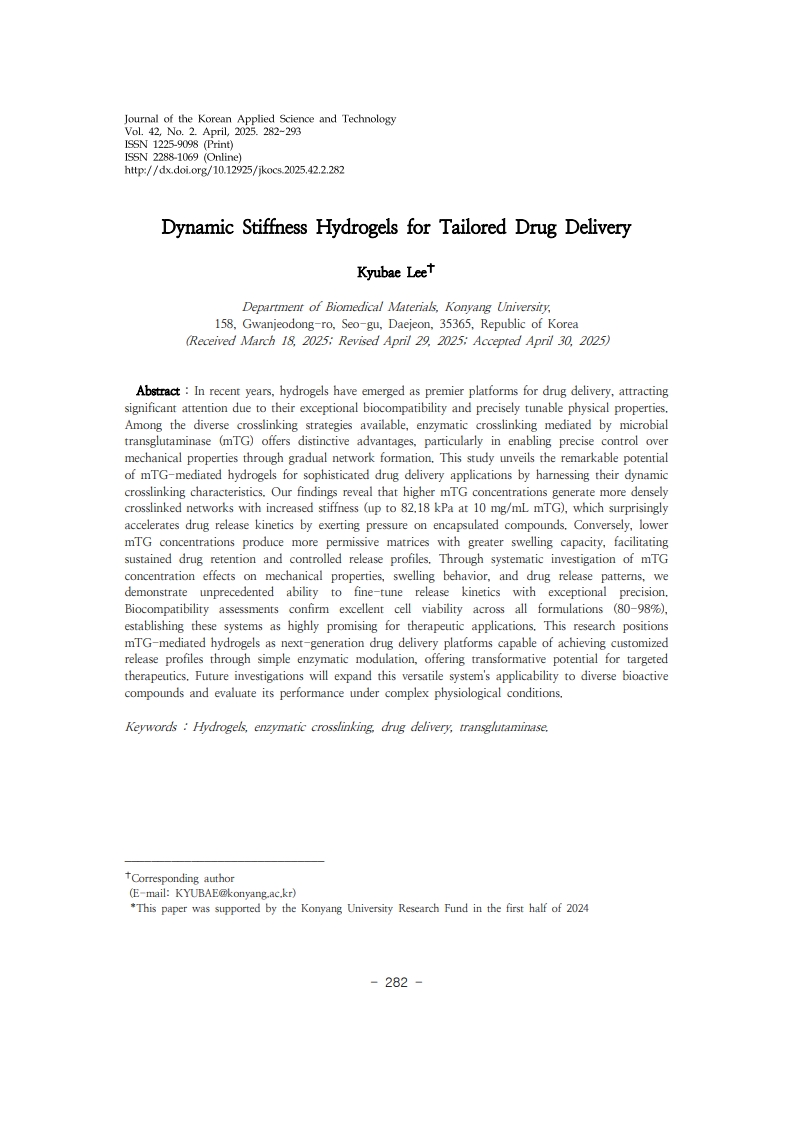
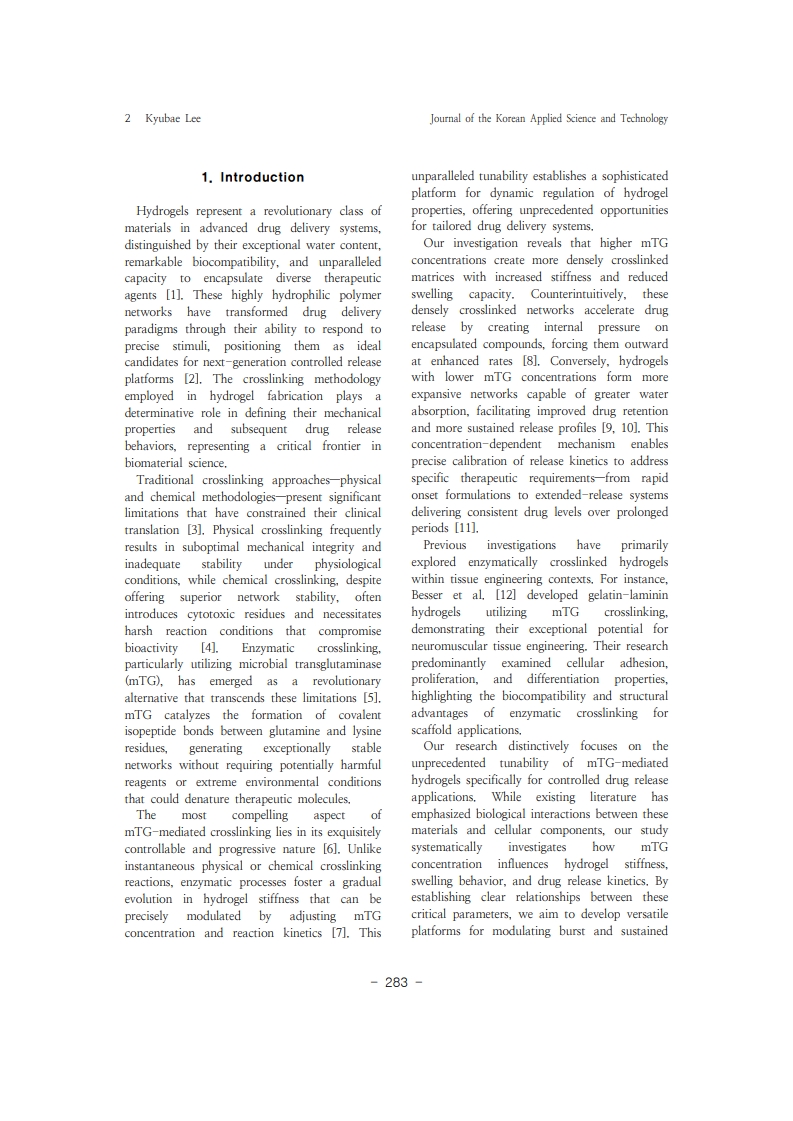
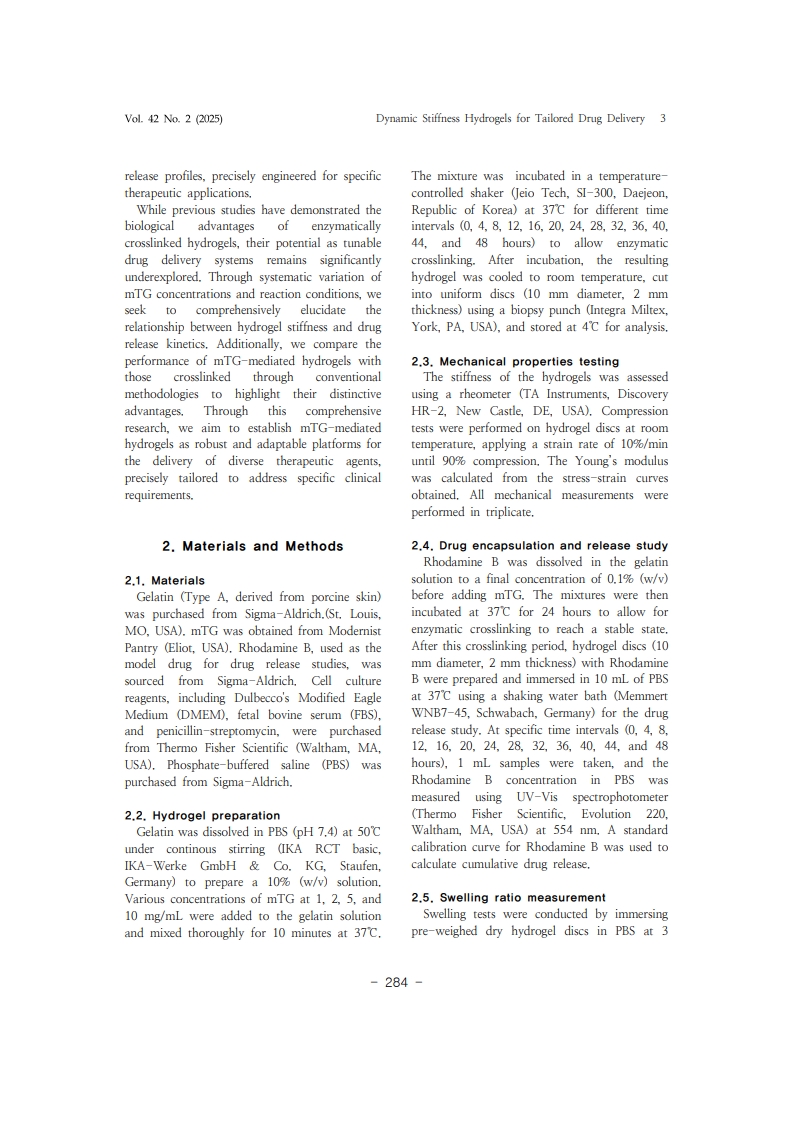
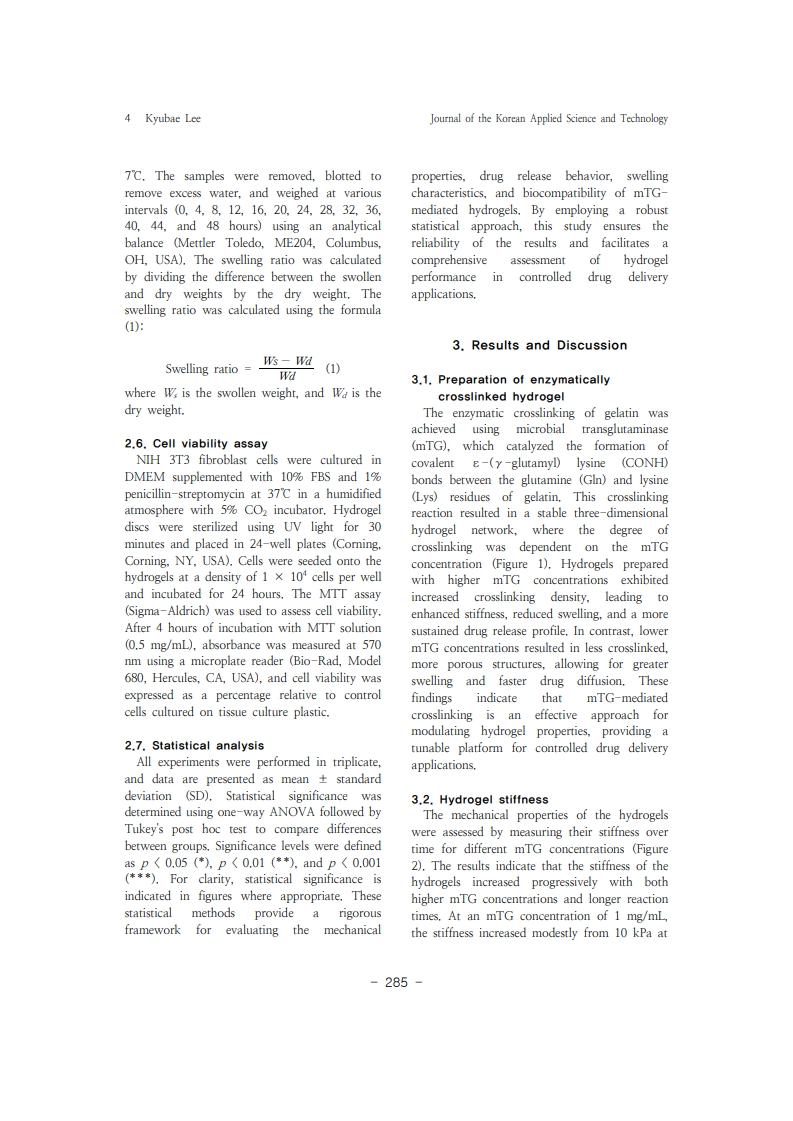
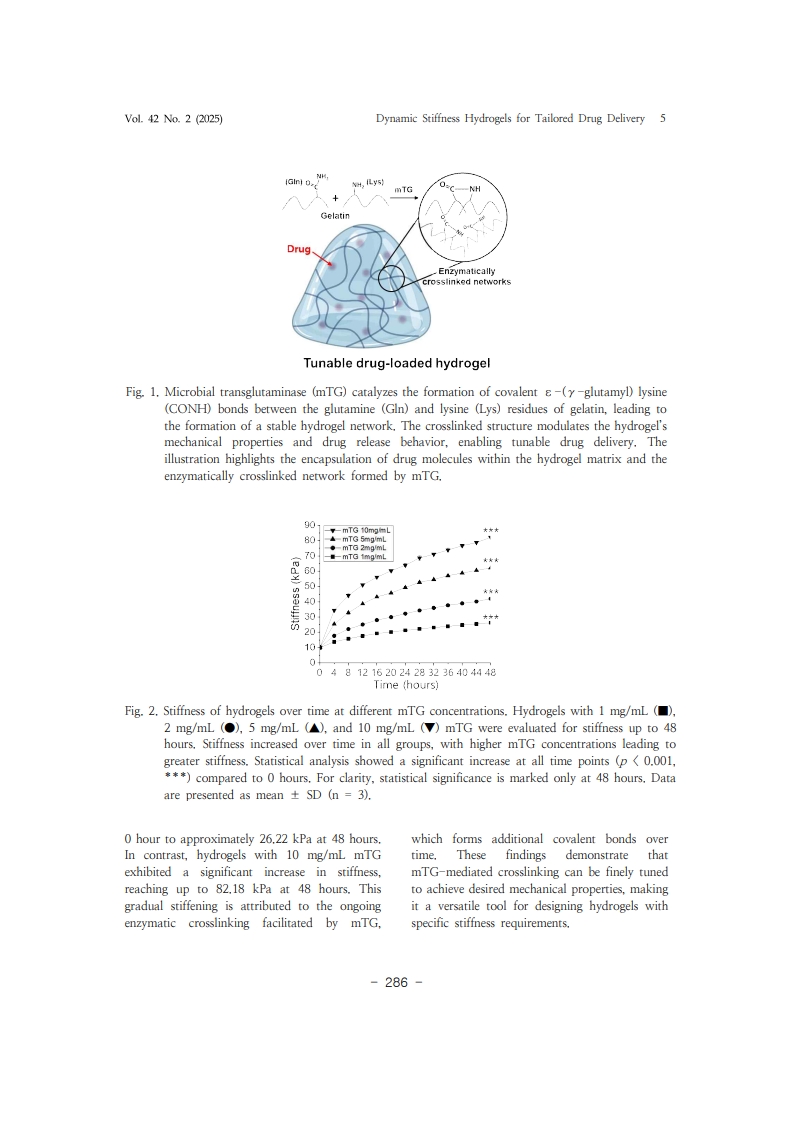
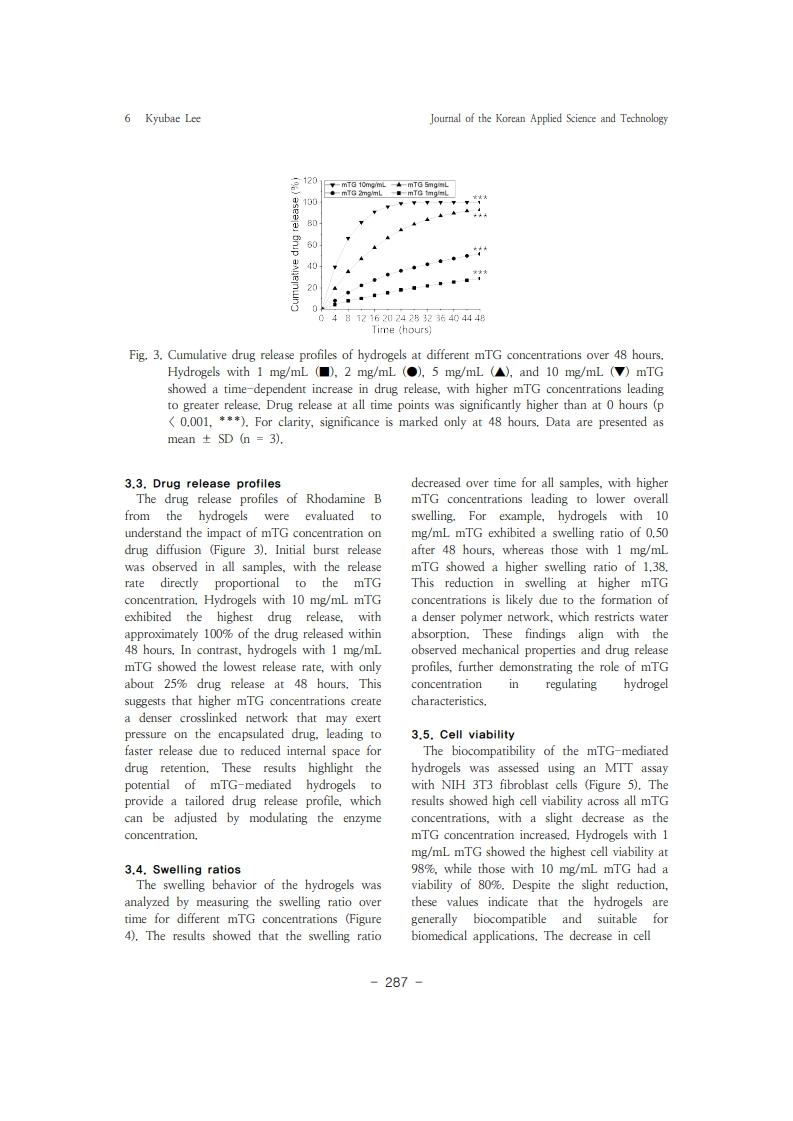
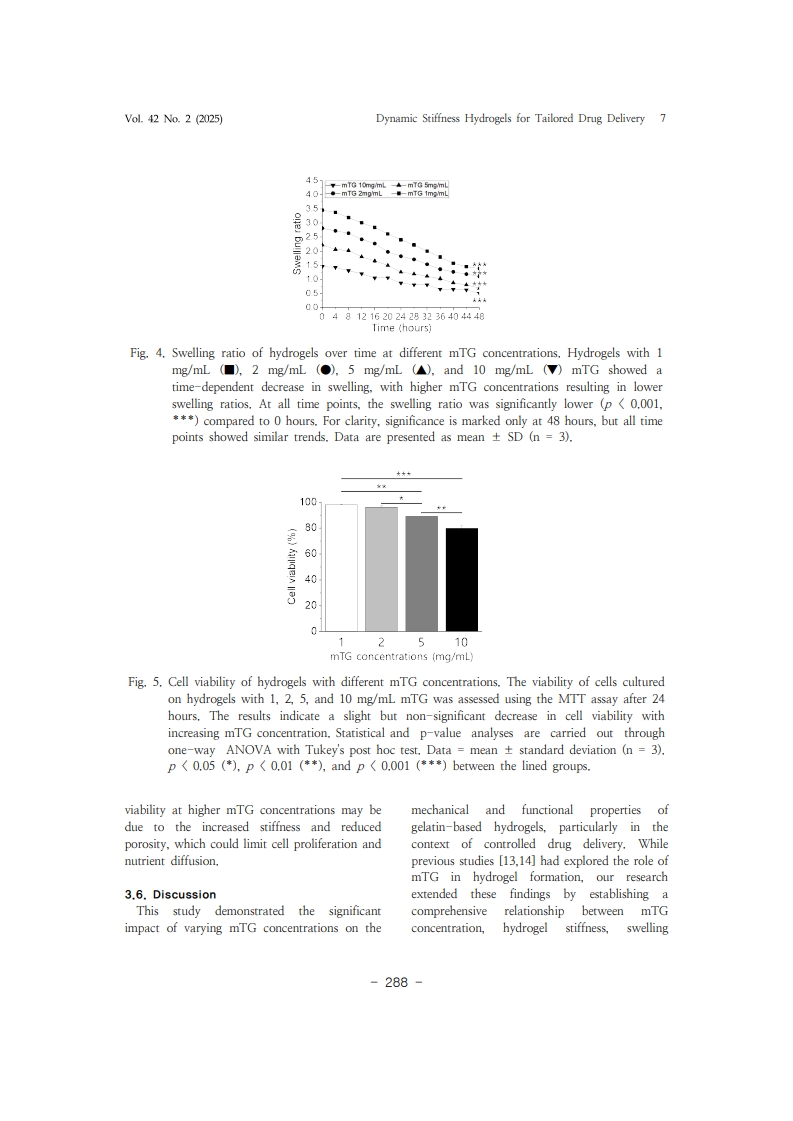
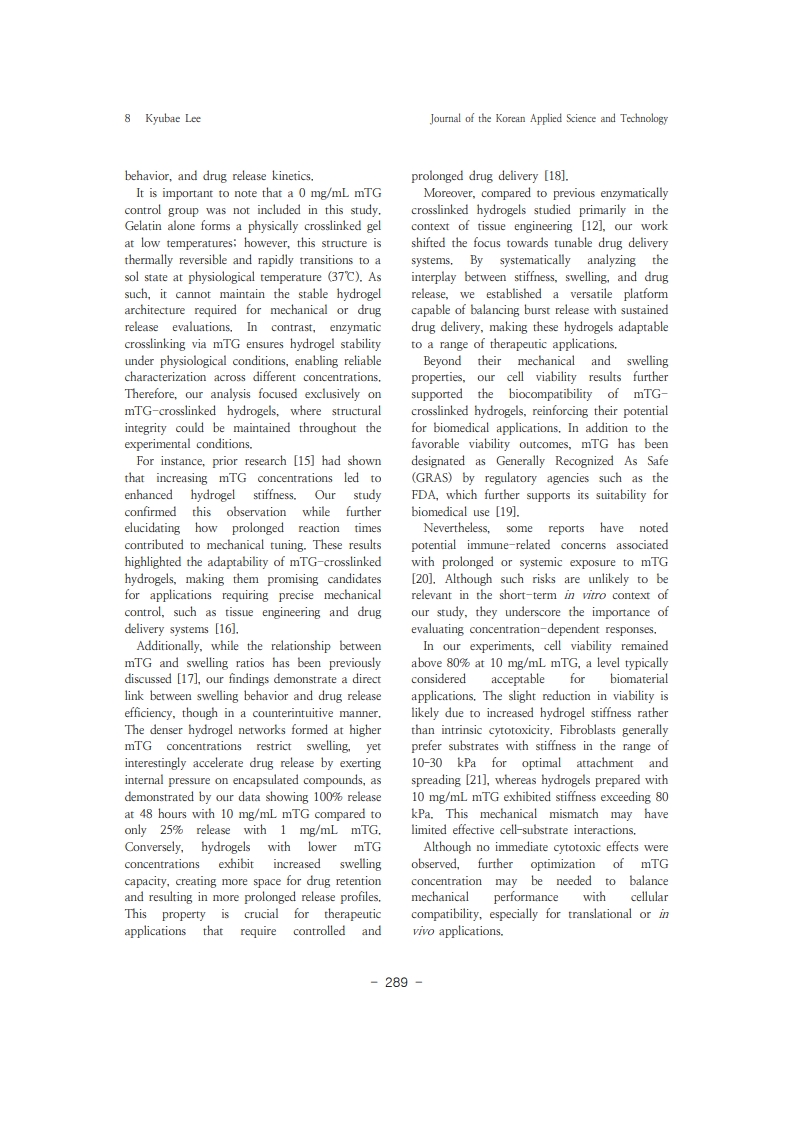
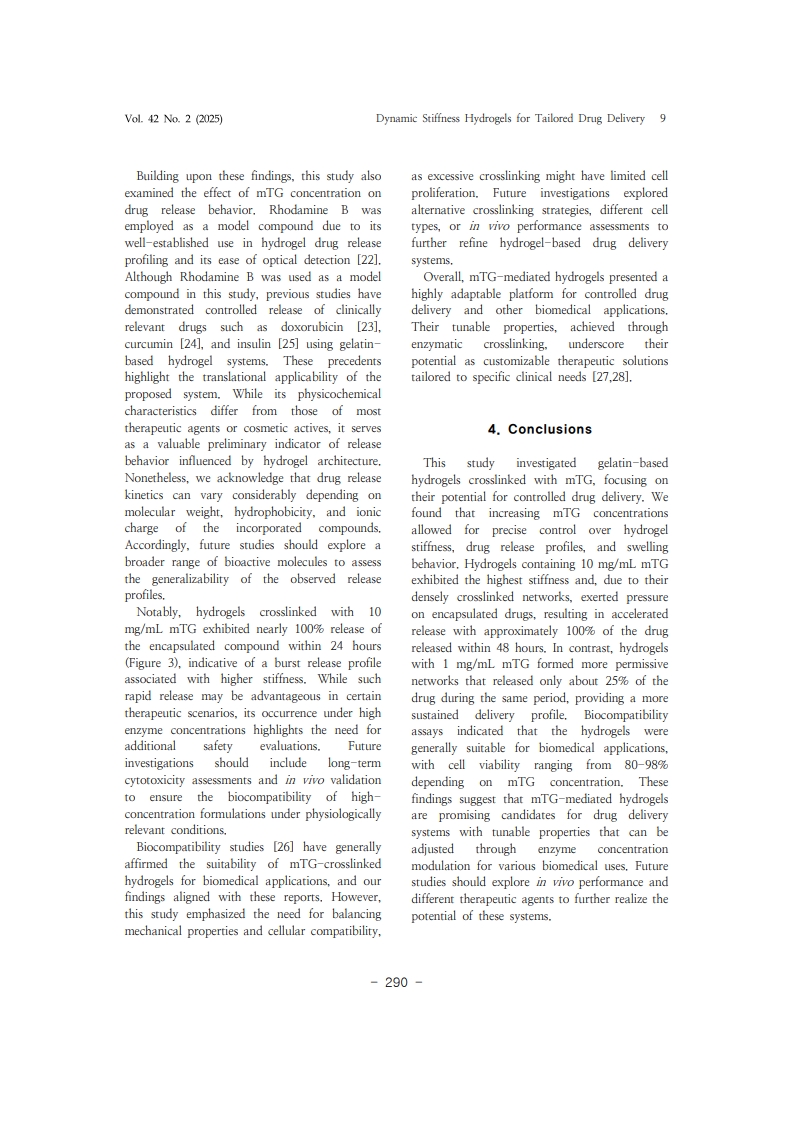
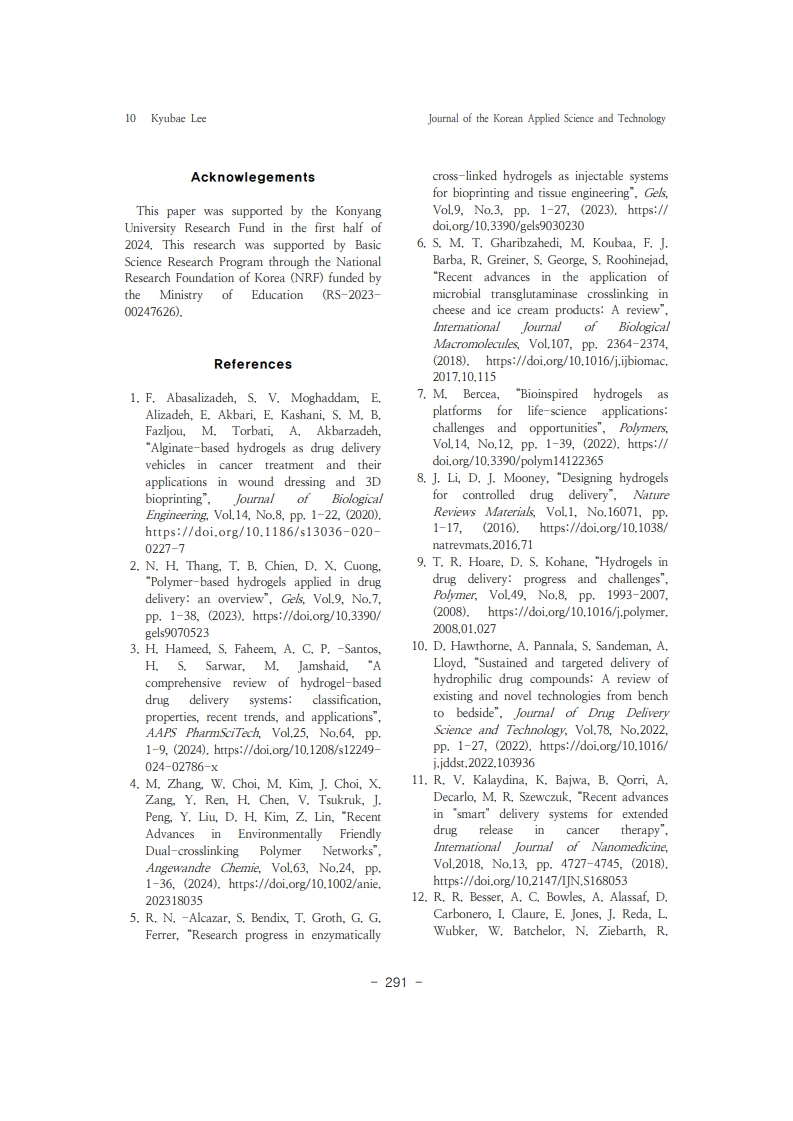
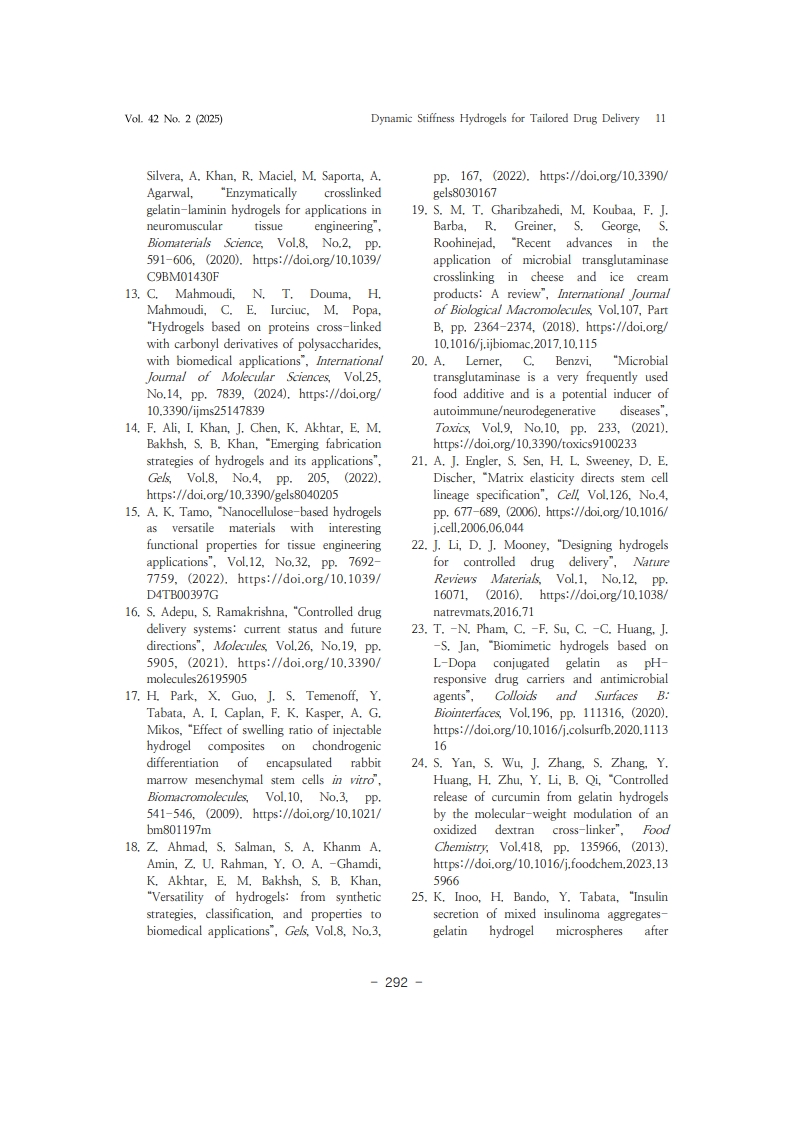
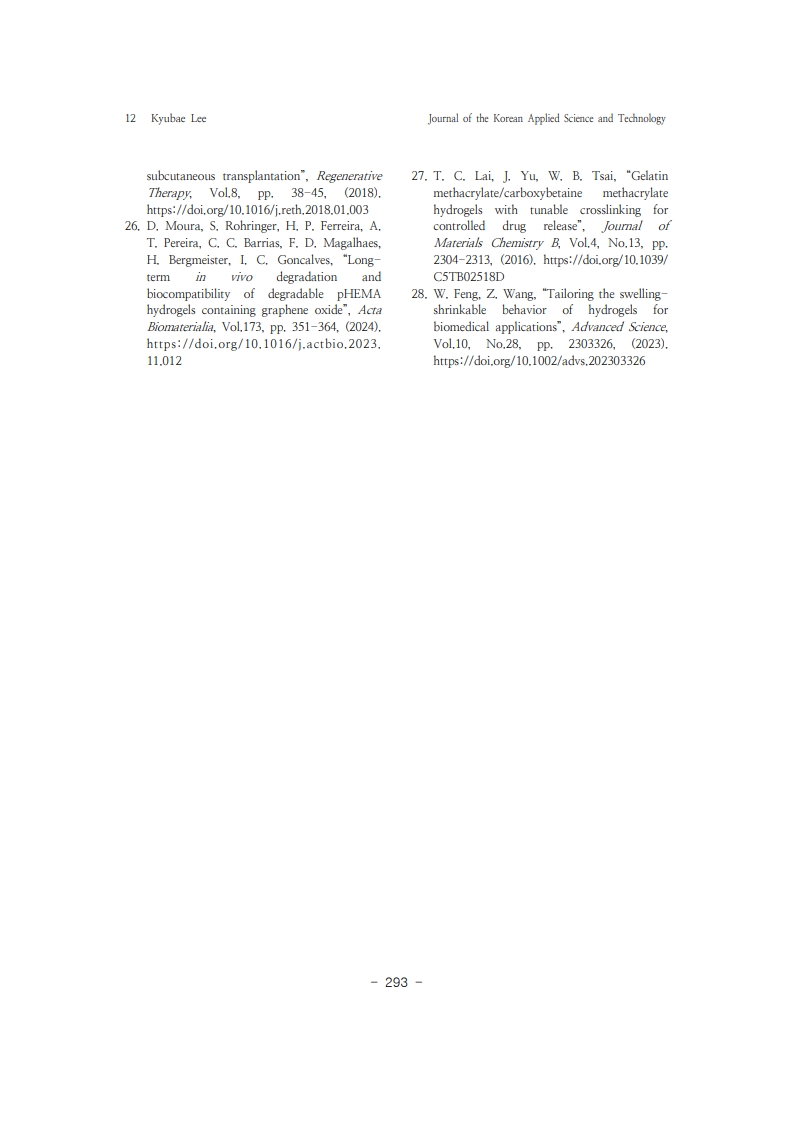
1. F. Abasalizadeh, S. V. Moghaddam, E. Alizadeh, E. Akbari, E. Kashani, S. M. B.Fazljou, M. Torbati, A. Akbarzadeh, “Alginate-based hydrogels as drug delivery
vehicles in cancer treatment and their applications in wound dressing and 3Dbioprinting”, Journal of Biological Engineering, Vol.14, No.8, pp. 1-22, (2020).
https://doi.org/10.1186/s13036-020-0227-7
2. N. H. Thang, T. B. Chien, D. X. Cuong, “Polymer-based hydrogels applied in drug delivery: an overview”, Gels, Vol.9, No.7, pp. 1-38
(2023). https://doi.org/10.3390/gels9070523
3. H. Hameed, S. Faheem, A. C. P. -Santos, H. S. Sarwar, M. Jamshaid, “A comprehensive review of hydrogel-based drug delivery systems: classification,
properties, recent trends, and applications”, AAPS PharmSciTech, Vol.25, No.64, pp. 1-9, (2024). https://doi.org/10.1208/s12249-024-02786-x
4. M. Zhang, W. Choi, M. Kim, J. Choi, X. Zang, Y. Ren, H. Chen, V. Tsukruk, J.Peng, Y. Liu, D. H. Kim, Z. Lin, “Recent Advances in Environmentally Friendly
Dual-crosslinking Polymer Networks”, Angewandte Chemie, Vol.63, No.24, pp.1-36, (2024). https://doi.org/10.1002/anie.202318035
5. R. N. -Alcazar, S. Bendix, T. Groth, G. G. Ferrer, “Research progress in enzymatically cross-linked hydrogels as injectable systems for bioprinting and tissue engineering”, Gels, Vol.9, No.3, pp. 1-27, (2023). https://doi.org/10.3390/gels9030230
6. S. M. T. Gharibzahedi, M. Koubaa, F. J. Barba, R. Greiner, S. George, S. Roohinejad, “Recent advances in the application of microbial transglutaminase crosslinking in cheese and ice cream products: A review”, International Journal of Biological Macromolecules, Vol.107, pp. 2364-2374
(2018). https://doi.org/10.1016/j.ijbiomac.2017.10.115
7. M. Bercea, “Bioinspired hydrogels as platforms for life-science applications:challenges and opportunities”, Polymers, Vol.14, No.12, pp. 1-39, (2022).
https://doi.org/10.3390/polym14122365
8. J. Li, D. J. Mooney, “Designing hydrogels for controlled drug delivery”, NatureReviews Materials, Vol.1, No.16071, pp. 1-17, (2016).
https://doi.org/10.1038/natrevmats.2016.71
9. T. R. Hoare, D. S. Kohane, “Hydrogels in drug delivery: progress and challenges”, Polymer, Vol.49, No.8, pp. 1993-2007,(2008). https://doi.org/10.1016/j.polymer.2008.01.027
10. D. Hawthorne, A. Pannala, S. Sandeman, A. Lloyd, “Sustained and targeted delivery of hydrophilic drug compounds: A review of existing and novel technologies from bench to bedside”, Journal of Drug Delivery Science and Technology, Vol.78, No.2022, pp. 1-27, (2022).
https://doi.org/10.1016/j.jddst.2022.103936
11. R. V. Kalaydina, K. Bajwa, B. Qorri, A. Decarlo, M. R. Szewczuk, “Recent advances in "smart" delivery systems for extended drug release in cancer therapy”,
International Journal of Nanomedicine, Vol.2018, No.13, pp. 4727-4745, (2018). https://doi.org/10.2147/IJN.S168053
12. R. R. Besser, A. C. Bowles, A. Alassaf, D. Carbonero, I. Claure, E. Jones, J. Reda, L. Wubker, W. Batchelor, N. Ziebarth, R. Vol. 42 No. 2 (2025) Dynamic Stiffness Hydrogels for Tailored Drug Delivery 11Silvera, A. Khan, R. Maciel, M. Saporta, A. Agarwal, “Enzymatically crosslinked gelatin-laminin hydrogels for applications in neuromuscular tissue engineering”, Biomaterials Science, Vol.8, No.2, pp. 591-606, (2020). https://doi.org/10.1039/C9BM01430F
13. C. Mahmoudi, N. T. Douma, H. Mahmoudi, C. E. Iurciuc, M. Popa, “Hydrogels based on proteins cross-linked with carbonyl derivatives of polysaccharides,
with biomedical applications”, International Journal of Molecular Sciences, Vol.25, No.14, pp. 7839, (2024). https://doi.org/10.3390/ijms25147839
14. F. Ali, I. Khan, J. Chen, K. Akhtar, E. M. Bakhsh, S. B. Khan, “Emerging fabrication strategies of hydrogels and its applications”, Gels, Vol.8, No.4, pp. 205, (2022). https://doi.org/10.3390/gels8040205
15. A. K. Tamo, “Nanocellulose-based hydrogels as versatile materials with interesting functional properties for tissue engineering applications”, Vol.12, No.32, pp. 7692- 7759, (2022). https://doi.org/10.1039/D4TB00397G
16. S. Adepu, S. Ramakrishna, “Controlled drug delivery systems: current status and future directions”, Molecules, Vol.26, No.19, pp. 5905
(2021). https://doi.org/10.3390/molecules26195905
17. H. Park, X. Guo, J. S. Temenoff, Y. Tabata, A. I. Caplan, F. K. Kasper, A. G. Mikos, “Effect of swelling ratio of injectable hydrogel composites on chondrogenic
differentiation of encapsulated rabbit marrow mesenchymal stem cells in vitro”,ㅡBiomacromolecules, Vol.10, No.3, pp. 541-546, (2009).
https://doi.org/10.1021/bm801197m
18. Z. Ahmad, S. Salman, S. A. Khanm A. Amin, Z. U. Rahman, Y. O. A. -Ghamdi, K. Akhtar, E. M. Bakhsh, S. B. Khan, “Versatility of hydrogels: from synthetic
strategies, classification, and properties to biomedical applications”, Gels, Vol.8, No.3, pp. 167, (2022). https://doi.org/10.3390/gels8030167
19. S. M. T. Gharibzahedi, M. Koubaa, F. J. Barba, R. Greiner, S. George, S. Roohinejad, “Recent advances in the application of microbial transglutaminase
crosslinking in cheese and ice cream products: A review”, International Journal of Biological Macromolecules, Vol.107, Part B, pp. 2364-2374, (2018). https://doi.org/10.1016/j.ijbiomac.2017.10.115
20. A. Lerner, C. Benzvi, “Microbial transglutaminase is a very frequently used food additive and is a potential inducer of autoimmune/neurodegenerative diseases”, Toxics, Vol.9, No.10, pp. 233, (2021). https://doi.org/10.3390/toxics9100233
21. A. J. Engler, S. Sen, H. L. Sweeney, D. E. Discher, “Matrix elasticity directs stem cell lineage specification”, Cell, Vol.126, No.4, pp. 677-689, (2006). https://doi.org/10.1016/j.cell.2006.06.044
22. J. Li, D. J. Mooney, “Designing hydrogels for controlled drug delivery”, Nature Reviews Materials, Vol.1, No.12, pp. 16071, (2016).
https://doi.org/10.1038/natrevmats.2016.71
23. T. -N. Pham, C. -F. Su, C. -C. Huang, J. -S. Jan, “Biomimetic hydrogels based on L-Dopa conjugated gelatin as pHresponsivedrug carriers and antimicrobial
agents”, Colloids and Surfaces B: Biointerfaces, Vol.196, pp. 111316, (2020). https://doi.org/10.1016/j.colsurfb.2020.111316
24. S. Yan, S. Wu, J. Zhang, S. Zhang, Y. Huang, H. Zhu, Y. Li, B. Qi, “Controlled release of curcumin from gelatin hydrogels by the molecular-weight modulation of an oxidized dextran cross-linker”, Food Chemistry, Vol.418, pp. 135966, (2013). https://doi.org/10.1016/j.foodchem.2023.135966
25. K. Inoo, H. Bando, Y. Tabata, “Insulin secretion of mixed insulinoma aggregatesgelatinhydrogel microspheres after subcutaneous transplantation”, Regenerative Therapy, Vol.8, pp. 38-45, (2018). https://doi.org/10.1016/j.reth.2018.01.003
26. D. Moura, S. Rohringer, H. P. Ferreira, A. T. Pereira, C. C. Barrias, F. D. Magalhaes, H. Bergmeister, I. C. Goncalves, “Longtermin vivo degradation and
biocompatibility of degradable pHEMA hydrogels containing graphene oxide”, Acta Biomaterialia, Vol.173, pp. 351-364, (2024).
https://doi.org/10.1016/j.actbio.2023.11.012
27. T. C. Lai, J. Yu, W. B. Tsai, “Gelatin methacrylate/carboxybetaine methacrylate hydrogels with tunable crosslinking for controlled drug release”, Journal of
Materials Chemistry B, Vol.4, No.13, pp. 2304-2313, (2016). https://doi.org/10.1039/C5TB02518D
28. W. Feng, Z. Wang, “Tailoring the swellingshrinkablebehavior of hydrogels for biomedical applications”, Advanced Science, Vol.10, No.28, pp. 2303326, (2023).
https://doi.org/10.1002/advs.202303326

